#prince berthold
Text
The Nymph's Tale & The Cursed Prince
Both are personal projects I've been working on for years now and I'll continue to do so. Maybe one day they will become a real thing💚🌿

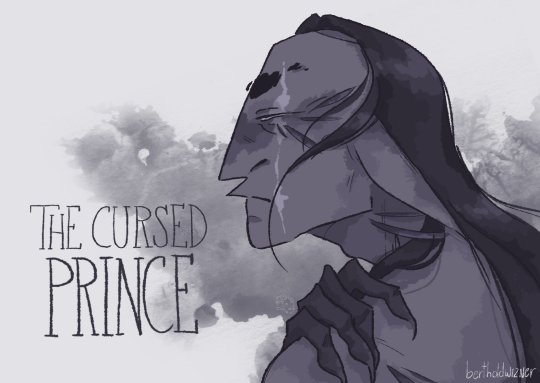




6 notes
·
View notes
Text
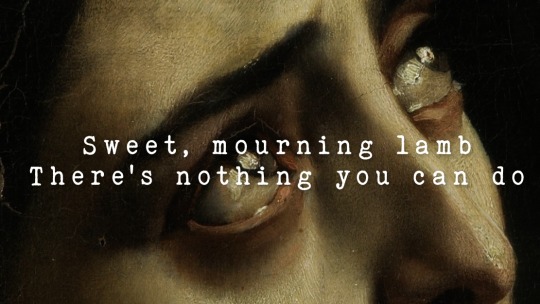





Ptolemaea ~ Ethel Cain + The Last Day of Pompeii ~ Karl Bryullov // Judith and her Maidservant with the Head of Holofernes ~ Orazio Gentileschi // Ordeal of the Bier ~ Jenö Gyárfás // Stańczyk ~ Jan Matejko // The Two Princes Edward and Richard in the Tower ~ Sir John Everett Millais // The Irritating Gentleman ~ Berthold Woltze
#ethel cain#ptolemaea#music#art#preacher's daughter#lyrics#hayden anhedönia#mothercain#typography#paintings
194 notes
·
View notes
Text
Since I've shared the meanings of the names of Cinderella and Snow White's Princes in their adaptations, why don't I do the same for Sleeping Beauty's Prince?
@paexgo-rosa
Désiré (some productions of Tchaikovsky's ballet): "Desired one."
Florimund (other productions of Tchaikovsky's ballet): "Flourishing protection."
Reinhold (Humperdinck's opera): "Ruler's advisor" or "pure and lovely." (The former is the name's original meaning, but the latter is probably the intended meaning in the opera.)
Aprile (Respighi's opera): "April."
Florestan (the 1949 Finnish film): "Flowering."
Phillip (Disney's animated film): "Horse lover."
Ferdinand (the 1971 German film): "Bold journey."
Jaroslav (the 1978 Czech film Jak se budí princezny): "Fierce and glorious."
Vilém/Wilhelm (the 1990 Czech/German film – Briar Rose's first love): "Strong helmet."
Jan/Johann (the 1990 Czech/German film - Briar Rose's second love, who wakes her): "God is gracious."
Luis (the animated series Happily Ever After: Fairy Tales for Every Child): "Famous in battle."
Richard (Jetlag Productions' animated version): "Brave ruler."
Rakhal (the animated series The Legend of Sleeping Beauty): Unknown; possibly a form of Raguel, meaning "friend of God."
Berthold (the animated series Simsala Grimm): "Bright power."
Janek (the 2006 Czech film): "God is gracious."
Frederik (Märchenperlen's version): "Peaceful ruler."
Fynn (Sechs auf einen Streich's version): "White" or "blessed."
11 notes
·
View notes
Text


Prince Philip started his formal education at MacJannet American School, a pre-preparatory school in St. Cloud, France then went to Cheam Preparatory School in Surrey, England.
In 1933, he was transferred to Schule Schloss Salem in Germany, which was owned by his brother-in-law, Prince Berthold, Margrave of Baden, so as to save school fees. The timing had gotten tricky though — the influence of the Nazi Party was growing steadily, and Hitler became chancellor that year. Princess Theodora, his sister, was not enthusiastic about the turn of events. And Philip, being the wise boy that he was, could not stomach the Nazi salute at all. Thus, he was abruptly removed from Salem. The very reason for this was: whenever the Nazi salute was given, he roared with laughter.
59 notes
·
View notes
Text
Oswald Boelcke - Part 2
Fighter Pilot and Celebrity
In early 1915 French flyers started to carry heavy machine guns with them in order to attack German reconnaissance planes. This endeavor was not very fruitful, a hit was pure luck. But it inspired all sides to experiment with armed aeroplanes and gave way to air battles and the establishment of air warfare. Two weeks after setting up the unit, they were sent to Douai where heavy fighting was going on; British and French forces tried to break through the German lines.
In his new unit, Boelcke met an ambitious and talented pilot, he quickly befriended: Max Immelmann. Immelmann reported about this new acquaintance: “Soon it turned out that we fit together very well. We don't smoke, hardly ever drink alcohol, but we like to eat cake. Boelcke is a capable sportsman. He is an extraordinarily calm and level-headed person with reasonable views. He flies excellently.”
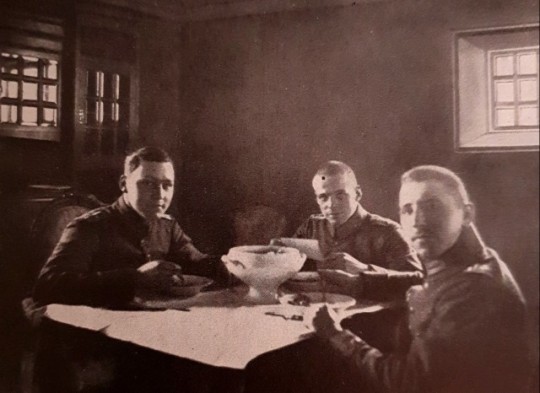
With the sale of a number of letters from Boelcke's estate in recent years, the suspicion has crept in that Boelcke and Immelmann didn't like each other. In one of the letters to his mother, Boelcke criticizes Immelmann's self-representation. Immelmann and Boelcke became "famous" at the same time, their successes followed one another. While Boelcke was reluctant to be used as a propaganda figure, Immelmann enjoyed the press hype surrounding him. In my opinion that does not mean that Boelcke didn´t like Immelmann; it is very possible that he simply did not agree with him on this issue. To call them adversaries due to that goes too far. They clearly got along well and even if they grew apart after they parted ways, both knew that they are fighting on the same side.
By mid-1915, German aircraft were also equipped with machine guns and Boelcke was able to change from his reconnaissance plane to a two-seater fighter plane. During this time the famous aeroplane constructor Anthon Fokker was in Douai to show his new single-seater fighter plane. Boelcke spent a lot of time getting familiar with this new weapon.
In June he and his companion had their first victory, they were able to shoot down a French Parasol. Boelcke as humble as ever told his parents to not give his letter in which es described the fight to the press: “Father asks if he may publish my report in the newspaper. You know I don't hold publicity in high esteem. But if you really want to, I will not oppose it. But without a name, of course!”.
By July Boelcke was able to get a Fokker-Einsitzer (single seater). Now he would be doing the flying and the shooting. “My ideal has been reached with the single seater: now i can be the leader, observer and fighter all at the same time”. A sentiment that was shared by many of the soldiers: Manfred von Richthofen and Rudolf Berthold also spoke of wanting to fly and fight alone, to take sole responsibility for everything that happened. He now spent his time patrolling the lines, searching for French artillery fliers and disrupt them in their doing.
And so starts Oswald Boelckes exceptional career as a fighter pilot. But as always, a hero can´t just be a hero in one field of activity: so while Boelcke became a national hero by flying, he also became a hero to a French boy who fell off a bridge into a river, almost drowning, as he had never learned how to swim. Witnessing the accident, Boelcke jumped into the river, saving the boys life. Oh my, that would make for a great movie, though it would possible be called unrealistic.
Boelcke was a young man and therefore interested in girls. He fraternized with the German nurses, even took one up in his plane.

He also met a nice French girl when he was invited to have dinner with Prince Aribert von Anhalt. “I slipped out of the conversation and was introduced to the lady of the house where the prince lives - a very nice mum with an even nicer daughter Ninette, who I immediately became friends with and whom I now visit almost every day to chat in French with her - of course only because of that!”
In September 1915 Boelcke got transferred to Metz, to a “Brieftauben-Abteilung”. This “Carrier pigeon company” was of course just an alias for the actual use of this unist: single seater fighters with the sole purpose of shooting down any enemy airplane.
Boelcke was invited to Berlin to evaluate the new Fokker fighter plane, by that time he had already made a name for himself as an expert and his opinion was valued. Boelcke spent the rest of the year shooting down enemies.
By January 1916 he had eight victories, the same as Immelmann. Both were surprised when it was announced that they would be awarded Germany's highest military medal, the Pour le Mérite. By then Boelcke was a superstar in Germany; every newspaper reported about him and printed his picture. From every corner in Germany he got letters sent to him. While he was happy about all the sympathy, he was also a little uncomfortable with all the attention: “That's all well and good - if only I didn't have to answer such an awful lot of letters! The other day, the German Automobile Club sent me its "golden ADAC badge of honour with diamonds" and recently they made me an honorary member of the Academic Air Fleet Association - I don't know what to do with all these new honours”.

In June 1916 he was ordered to set up a squadron of only fokker single-seaters, the pioneer of the later fighter squadrons. But he was not to be their leader, as shortly before going operational Boelcke was forbidden to fly by the Kaiser himself. As a consolation he was sent on a journey to the orient; this was of course the result of Immelmann's death shortly before.
Boelcke visited the Balkan, Bulgaria and Turkey, then he stayed at the Eastern Front for a short while but he returned prematurely because the Somme offensive was in full swing and everyone was needed at the Western front.

While visiting his brother at the Eastern Front he recruited two excellent pilots for his Staffel: Manfred von Richthofen and Erwin Bohme. Both reported on the honour that had been bestowed upon them by being chosen by the famous Boelcke. “Boelcke was supposed to leave again the next morning. Early in the morning there was a sudden knock at my door and the great man with the Pour le Mérite stood in front of me. I almost hugged him when he asked me if I wanted to go to the Somme with him.” (Manfred von Richthofen). “Imagine my astonishment when Boelcke suddenly walked up to me the next morning and simply asked: Do you want to go to the Somme with me? I have never called out a happier yes in my life.” (Erwin Boehme).
And so Boelcke returned to France after six weeks away, with a new task and with new students, both of whom will unfortunately be involved in his death.
11 notes
·
View notes
Text

✵ August 17, 1931 ✵
Princess Theodora of Greece and Denmark & Prince Berthold, Margrave of Baden
10 notes
·
View notes
Text
anywhere with you - chapter 27
summary: Two kingdoms came together after a brief, but bloody, war and brokered peace, strengthening the bond between them. The price? One of the kings sending his son as a peace offering. King Berthold was baffled at the prospect and the reason behind Prince Roy’s arrival. It was completely unexpected. However, with another invasion from the north looming on the horizon just beyond their forest borders, he had no choice but to keep Roy by his side. At a loss of where to assign him in his grief, Prince Roy was appointed as Princess Riza Hawkeye’s guard.
-
A Royai fantasy and adventure AU
read on ao3
rated: t
words: 3156
tags: royai, fantasy au, roleswap, kinda, royalty au, adventure, grief, conflict, war, angst, angst with a happy ending, idiots in love, friends to lovers, mutual pining, pure self indulgence, character death, death, past abuse
snippet:
He had to go to her.
Chris had given up so much for him growing up. Had offered him sanctuary and assistance. Roy knew his duty to her and had the burning desire to assist her.
But that also meant leaving his new home.
His love.
His future wife.
Roy’s heart tore in two, stuck between the two kingdoms and what he felt he needed do.
“Go.”
He whirled in place to look at Riza, who’d followed him.
“You should go to her,” she prompted, coming to a stop next to him. Her smile contained nothing but encouragement. “Assist her in whatever way is needed.”
read the rest on ao3
13 notes
·
View notes
Text
Finally off to Flanders
During summer 1917 Berthold sustained another serious injury, he was shot though the right calf.
15 August 1917
Now I have to start all over again. In Flanders, the English have so far dominated the air, so good fighter pilots are even more necessary than infantry. It is with a heavy heart that I say goodbye to my people of the Jasta 14 and go to Flanders alone.
My new squadron first needs thorough flying training, I want to use the whole of August to practice.
Already the English offensive begins to fizzle out like the French enterprise on the Aisne.
At last my fight for a better organisation of the airmen is showing some success, since I have recently got the commander of the Flanders Army on my side: At my suggestion, four squadrons are always united into so-called fighter groups and these are placed under the leadership of old, proven fighter pilots.
20 August 1917
Today I received a picture and a few friendly lines from Prince Eitel Friedrich. A few weeks ago, when I was still with 14, I got to know the prince as a simple, natural person with a strict sense of duty. I had been to dinner with him one Sunday. There was only soup and a piece of meat with vegetables. No feasting and material ostentation, which might be a privilege for wretched parvenus, but downright Spartan-like, old Prussian simplicity! When I think of this, I realise that we Germans should be happy and grateful to have at the head of our empire a Hohenzollern dynasty that has not only led throughout the centuries, but also preserved a genuinely German way of life.
6 October 1917
My Jasta 18 has now become the core troupe. In September, it had already achieved 32 aerial victories. There is now no pilot without his own victory. This is not my doing, I merely trained them and led them to the enemy, showed them how to attack. The attack itself, the killing of the enemy, the main thing, is the achivement of the pilots. Their brilliant fulfilment shows what an outstanding spirit there is in the entire Jasta, in each individual!
I quickly settled in at 18. Two old good friends are faithfully at my side: Seppl Veltjens and old Mr Dingel. If Seppl stays alive, he will achieve great successes. He is like a young hunting dog: he still hasn't got the hang of it, even though he has already made quite a nice number of kills. He still lacks the eyes and the calm, cold calculation in difficult moments. But I will teach him what is missing. Old Mr Dingel and Father Turck are loyal, they never let our Jasta down and, even if they don't shoot any more themselves, they often help more with their decent attitude. They are the guarantors that an impeccable tone, a decent conception and a right aviation spirit always remain alive in the Jasta. Every busy day of flying tires me out, so I can't devote as much time as I used to to the organization and the comradeship.
Now it is the 4th time that the Jasta has cleaned up in the English bomb squadron which was considered unassailable! Apart from my opponent, 2 others have been brought down. It is my 28th! The mechanics are beaming. When we come back from a flight and there isn't a single enemy smashed up, they make a very reproachful face. The good guys!
Another severe injury!
On 10 October Berthold shot down his 29th opponent. In the process, he was shot in the upper right arm from the side, shattering the bone. He still managed to land safely, but had to be rescued unconscious from the machine. The serious injury could not be treated in the field hospital; Berthold was sent to a hospital in Berlin, where his sister Franziska was a head nurse. His wound is severe: the right upper arm is completely shattered, broken like an oak that has been struck by the deathblow. He has to spend 4 month in the hospital. On his insistance he returned to the front, where he lead the newly formed Jagdgeschwader 2. His arm was still not properly healed, painfull and lame. Still, on 28 Mai 1918 he shot down another victory.
On 10 August 1918 he shot down his 44th victory but during the fight his plane is so damaged that he crashes. Badly injured again, with his right arm broken once more, he is taken to a field hospital from which he soon escapes. But soon wound fever sets in and he has to admit to himself that the war is over for him. He returns home.
2 notes
·
View notes
Text

Ludwig, Grand Duke of Hesse and by Rhine with Gottfried, Prince of Hohenlohe-Langenburg and Berthold, Margrave of Baden 1940s.
#ludwig of hesse#Berthold of Baden#Gottfried of Hohenlohe-Langenburg#1940s#darmstadt#baden baden#Langenburg
4 notes
·
View notes
Text
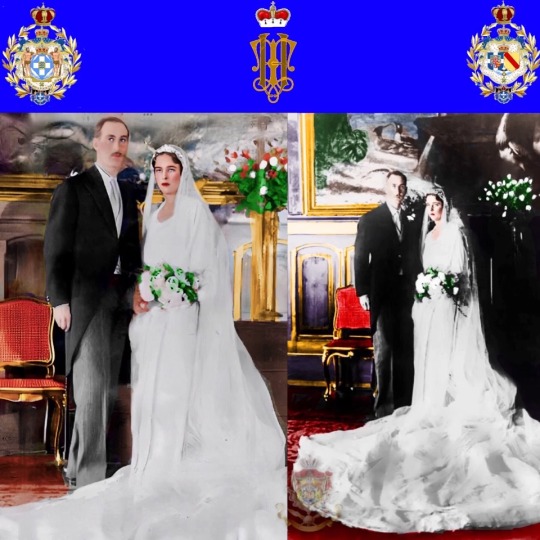


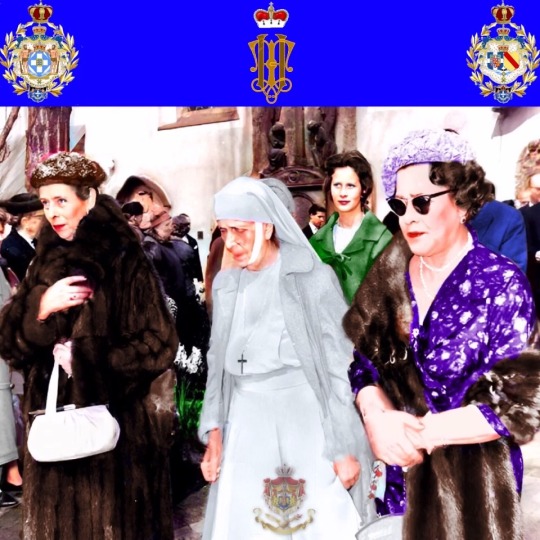


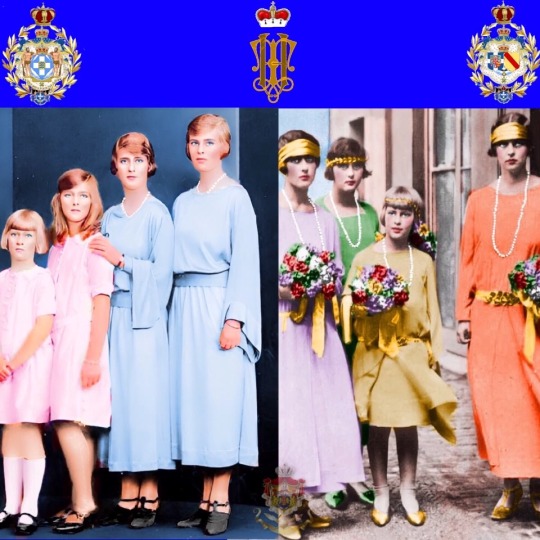
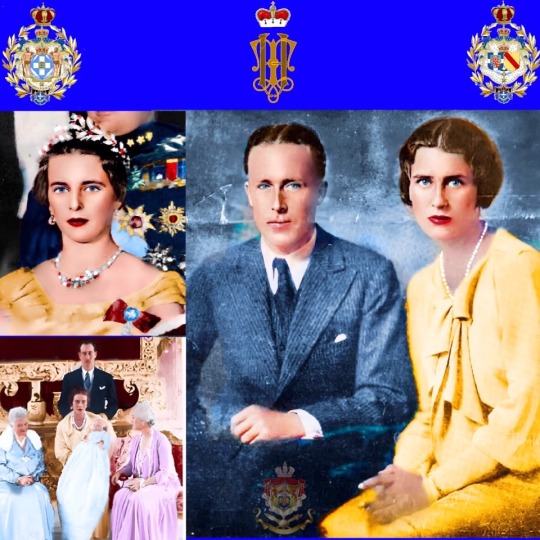
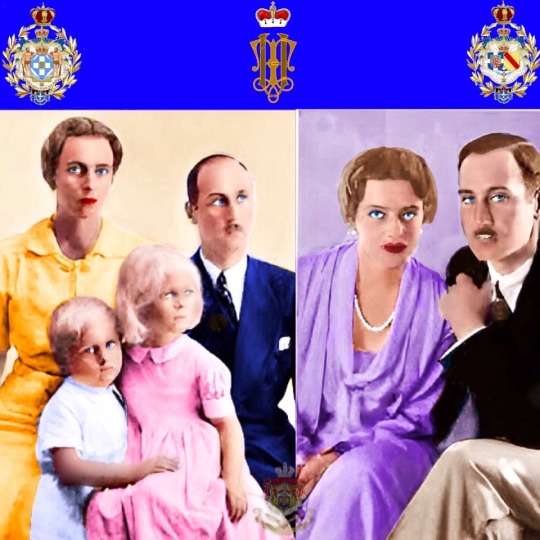
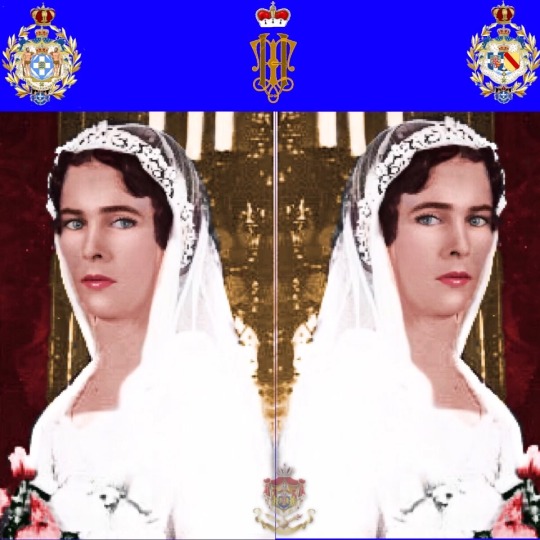
117 years since the Birth of Princess Theodora of Greece and Denmark (30 May 1906 – 16 October 1969) who was by birth a Greek and Danish princess as well as Margravine of Baden through her marriage to Berthold, pretender to the throne of the Grand Duchy of Baden.
The second of five children of Prince Andrew of Greece and Denmark and Princess Alice of Battenberg, Theodora spent a happy childhood between Athens and Corfu. In her youth, however, she witnessed the Balkan Wars (1912–1913), followed by the First World War (1914–1918) and the Greco-Turkish War (1919–1922). For the young princess and her relatives, these conflicts had dramatic consequences and led to their exile in Switzerland (between 1917 and 1920), then in France and the United Kingdom (from 1922 to 1936). During their exile, Theodora and her family depended on the generosity of their foreign relatives, in particular Marie Bonaparte (who offered them accommodation in Saint-Cloud) and Lady Louis Mountbatten (who supported them financially)
At the end of the 1920s, Theodora's mother was struck by a mental health crisis which led to her confinement in a Swiss psychiatric hospital. Shortly after, in 1931, Theodora married Berthold, Margrave of Baden, son of Chancellor of the German Reich Prince Maximilian. The couple then moved to Salem Castle, where Berthold ran a school with teacher Kurt Hahn. The princess gave birth to three children there: Margarita (1932–2013), Maximilian (1933–2022) and Ludwig (born 1937). Opposed to Nazism, Theodora and her husband kept their distance from the Nazi regime; however, this did not prevent Berthold from enlisting in the Wehrmacht at the start of the Second World War. Affected by the conflict, which divided her family into two factions, Theodora became involved in the German Red Cross and other charitable organizations.
The defeat of Germany and its occupation by the Allies brought new upheavals in the life of Theodora and Berthold. Though not held by the Soviets, responsible for the death of several of their cousins, the couple was ostracized by the British royal family at the time of the marriage of Prince Philip, Theodora's only brother, to Princess Elizabeth of the United Kingdom (later Queen Elizabeth II) in 1947. Over the years, the couple was nevertheless reintegrated into the life of the European elite, as illustrated by their invitation and presence at the coronation of Elizabeth II in 1953 and at the wedding of Juan Carlos, Prince of Asturias, and Princess Sophia of Greece and Denmark in 1962.
At the end of the 1940s, Theodora began to suffer from heart problems.Over time, her health deteriorated and she appeared very diminished at the wedding of Prince Juan Carlos and Princess Sophia in 1962.Her health then alternated between times when she had the greatest difficulty speaking or walking and times when she felt absolutely good. Unable to anticipate her next seizures, she had to move around with a cane at all times.Forced to have all her teeth pulled out, she acquired a strange smile, which her mother struggled to get used to.
As his wife's health deteriorated, Berthold suffered a fatal heart attack while driving with their son Ludwig on 27 October 1963.Upset by the demise of her husband, Theodora then hurriedly returned from Italy, where she was on vacation.
Theodora's last years were affected by the establishment of the Regime of the Colonels in Greece and by the departure into exile of King Constantine II and his family.Hospitalized at the clinic of Doctor Büdingen in Konstanz,Theodora died on 16 October 1969.Her funeral was held at the mausoleum of the Baden family in Salem in the presence of many members of the aristocracy, including her nephew Prince Charles, but not her brother Prince Philip who was on an official trip to Canada
117 χρονια από τη γέννηση της πριγκίπισσας Θεοδώρας της Ελλάδας και της Δανίας (30 Μαΐου 1906 – 16 Οκτωβρίου 1969), η οποία ήταν εκ γενετής Ελληνίδα και Δανή πριγκίπισσα καθώς και η Μαργραβίνη του Μπάντεν μέσω του γάμου της με τον Μπέρθολντ, διαδόχου του θρόνου του Μεγάλου Δουκάτου του Μπάντεν.
Το δεύτερο από τα πέντε παιδιά του πρίγκιπα Ανδρέα της Ελλάδας και της Δανίας και της πριγκίπισσας Αλίκη�� του Μπάτενμπεργκ, η Θεοδώρα πέρασε μια ευτυχισμένη παιδική ηλικία μεταξύ Αθήνας και Κέρκυρας. Στα νιάτα της, ωστόσο, έγινε μάρτυρας των Βαλκανικών Πολέμων (1912–1913), που ακολούθησαν τον Πρώτο Παγκόσμιο Πόλεμο (1914–1918) και τον Ελληνοτουρκικό πόλεμο (1919–1922). Για τη νεαρή πριγκίπισσα και τους συγγενείς της, αυτές οι συγκρούσεις είχαν δραματικές συνέπειες και οδήγησαν στην εξορία τους στην Ελβετία (μεταξύ 1917 και 1920), στη συνέχεια στη Γαλλία και το Ηνωμένο Βασίλειο (από το 1922 έως το 1936). Κατά τη διάρκεια της εξορίας τους, η Θεοδώρα και η οικογένειά της εξαρτιόταν από τη γενναιοδωρία των συγγενών τους, ιδιαίτερα της Μαρίας Βοναπάρτη (που τους πρόσφερε διαμονή στο Saint-Cloud) και της Λαίδης Λούις Μαουντμπάτεν (που τους στήριξε οικονομικά)
Στα τέλη της δεκαετίας του 1920, η μητέρα της Θεοδώρας χτυπήθηκε από μια κρίση ψυχικής υγείας που την οδήγησε στον εγκλεισμό της σε ένα ελβετικό ψυχιατρείο. Λίγο αργότερα, το 1931, η Θεοδώρα παντρεύτηκε τον Μπέρθολντ, Μαργράβο της Βάδης, γιο του Καγκελαρίου του Γερμανικού Ράιχ πρίγκιπα Μαξιμιλιανού. Στη συνέχεια, το ζευγάρι μετακόμισε στο Κάστρο του Σάλεμ, όπου ο Μπέρθολντ διηύθυνε ένα σχολείο με δάσκαλο τον Κερτ Χαν. Η πριγκίπισσα γέννησε εκεί τρία παιδιά: τη Μαργαρίτα (1932–2013), τον Μαξιμιλιανό (1933–2022) και τον Λούντβιχ (γεννήθηκε το 1937). Ενάντια στον ναζισμό, η Θεοδώρα και ο σύζυγός της κράτησαν αποστάσεις από το ναζιστικό καθεστώς. Ωστόσο, αυτό δεν εμπόδισε τον Μπέρτολντ να καταταγεί στη Βέρμαχτ κατά την έναρξη του Β' Παγκοσμίου Πολέμου. Επηρεασμένη από τη σύγκρουση, που χώρισε την οικογένειά της σε δύο φατρίες, η Θεοδώρα ασχολήθηκε με τον Γερμανικό Ερυθρό Σταυρό και άλλες φιλανθρωπικές οργανώσεις.
Η ήττα της Γερμανίας και η κατοχή της από τους Συμμάχους έφερε νέες ανατροπές στη ζωή της Θεοδώρας και του Μπέρθολντ. Αν και δεν θεωρούνταν από τους Σοβιετικούς, υπεύθυνους για τον θάνατο πολλών από τα ξαδέρφια τους, το ζευγάρι εξοστρακίστηκε από τη βρετανική βασιλική οικογένεια τη στιγμή του γάμου του πρίγκιπα Φίλιππου, του μοναδικού αδερφού της Θεοδώρας, με την πριγκίπισσα Ελισάβετ του Ηνωμένου Βασιλείου (αργότερα βασίλισσα Ελισάβετ ΙΙ) το 1947. Με τα χρόνια, το ζευγάρι επανεντάχθηκε ωστόσο στη ζωή της ευρωπαϊκής ελίτ, όπως φαίνεται από την πρόσκληση και την παρουσία τους στη στέψη της Ελισάβετ Β' το 1953 και στον γάμο του Χουάν Κάρλος, πρίγκιπα της Αστούριας, και την πριγκίπισσα Σοφία της Ελλάδας και της Δανίας το 1962.
Στα τέλη της δεκαετίας του 1940, η Θεοδώρα άρχισε να υποφέρει από καρδιακά προβλήματα. Με την πάροδο του χρόνου, η υγεία της επιδεινώθηκε και εμφανίστηκε πολύ εξασθενημένη στο γάμο του πρίγκιπα Χουάν Κάρλος και της πριγκίπισσας Σοφίας το 1962. Η υγεία της εναλλάσσονταν τότε μεταξύ των περιόδων που είχε τα καλύτερα δυσκολία στην ομιλία ή στο περπάτημα και φορές που ένιωθε απολύτως καλά. Μη μπορώντας να προβλέψει τις επόμενες κρίσεις της, έπρεπε να κυκλοφορεί με ένα μπαστούνι ανά πάσα στιγμή. Αναγκασμένη να της βγάλουν όλα τα δόντια, απέκτησε ένα παράξενο χαμόγελο, το οποίο η μητέρα της πάλευε να συνηθίσει.
Καθώς η υγεία της συζύγου του επιδεινώθηκε, ο Berthold υπέστη θανατηφόρο καρδιακό επεισόδιο ενώ οδηγούσε με τον γιο τους Ludwig στις 27 Οκτωβρίου 1963. Αναστατωμένη από τον θάνατο του συζύγου της, η Theodora επέστρεψε βιαστικά από την Ιταλία, όπου ήταν για διακοπές.
Τα τελευταία χρόνια της Θεοδώρας επηρεάστηκαν από την εγκαθίδρυση του καθεστώτος των συνταγματαρχών στην Ελλάδα και από την αναχώρηση στην εξορία του βασιλιά Κωνσταντίνου Β' και της οικογένειάς του. Νοσηλευόμενη στην κλινική του Doctor Büdingen στην Konstanz, η Θεοδώρα πέθανε στις 16 Οκτωβρίου 1969. Η κηδεία της έγινε που πραγματοποιήθηκε στο μαυσωλείο της οικογένειας Baden στο Σάλεμ παρουσία πολλών μελών της αριστοκρατίας, συμπεριλαμβανομένου του ανιψιού της Πρίγκιπα Κάρολου, αλλά όχι του αδελφού της πρίγκιπα Φίλιππου που βρισκόταν σε επίσημο ταξίδι στον Καναδά
#kingconstantine#danishroyalfamily#crownprincepavlos#queenannemarie#greek royal family#house of romanov#greekroyals#crownprincessmariechantal#danishroyals#princeconstantinealexios
2 notes
·
View notes
Text
when: royally fun facts
They may not be fun, but some of them are made-up. Made up facts are in italics.
Facts about Grand Duchess Anastasia Mikhailovna of Russia
(Karolina Augusta's great-great-grandmother)
Is the granddaughter of Tsar Nicholas I of Russia
Is the mother of Alexandrine, Queen Consort of Denmark
Is the mother of Frederick Francis IV, Grand Duke of Mecklenburg-Schwerin
Is the mother of Cecilie, Crown Princess of Germany
Following the death of her husband, had a illegitimate son with her personal secretary
Three of her brothers were murdered by the Bolsheviks during the Russian revolution
Facts about Princess Karola of Urach
(Karolina Augusta's great-grandmother)
Karola’s father, Wilhelm Karl, 2nd Duke of Urach, was briefly elected as the King of Lithuania in 1918.
Princess Karola of Urach was the first queen consort of Mecklenburg, and also the last Grand Duchess of Mecklenburg-Schwerin and of Mecklenburg-Strelitz.
Karola was the grand-niece of Empress Elisabeth ‘Sisi’ of Austria.
Karola was the half-niece of Queen Elisabeth of the Belgians.
Karola half-first cousins include Leopold III of Belgium, and Marie José, the last Queen Consort of Italy.
Karola and Mary of Teck, Queen of the United Kingdom, both descend from morganatic branches of the House of Württemberg. Karola and Mary were third cousins as great-great-granddaughters of Friedrich II Eugene, Duke of Württemberg.
Karola was a Roman Catholic and retained her faith following her marriage to Heinrich Ludwig, though their children were brought up in the Evangelical Lutheran Church of Mecklenburg.
Facts about Duchess Thyra of Mecklenburg-Schwerin
(Karolina Augusta's grandmother)
Thyra’s father, Grand Duke Friedrich Franz IV of Mecklenburg-Schwerin, was overthrown by her father-in-law, King Heinrich Ludwig of Mecklenburg
Thyra was the first Crown Princess of Mecklenburg (1939 - 1954)
Thyra was the second Queen of Mecklenburg (1954 - 1980)
Thyra was the niece of Alexandrine, Queen of Denmark (1912 - 1947)
Thyra was the first cousin of Frederik IX of Denmark (1947 - 1972)
Thyra was the niece of Cecilie, Crown Princess of Germany (1905 - 1951)
Thyra was the first cousin of Louis Ferdinand, Prince of Prussia (1951 - 1994)
Thyra was the niece of Marie Louise, Margravine of Baden (1928 - 1929)
Thyra was the first cousin of Berthold, Margrave of Baden (1929 - 1963), who married Princess Theodora of Greece and Denmark (the older sister of Prince Philip, Duke of Edinburgh)
Thyra was the niece of Ernest Augustus, Duke of Brunswick (1913 - 1918) and head of the House of Hannover (1923 - 1953)
Thyra was the first cousin of Ernst August, Hereditary Prince of Brunswick, Prince of Hanover (1953 - 1987)
Thyra was the first cousin of Frederica, Queen of Greece (1947 - 1964)
Facts about Princess Eleonora of Leiningen
(Karolina Augusta's mother)
Descends from all three children of Victoria of Saxe-Coburg-Saalfeld: Carl, 3rd Prince of Leiningen; Princess Feodora of Leiningen; and Queen Victoria of the United Kingdom.
Facts about Queen Karolina Augusta I of Mecklenburg
Is the first female ruler in Mecklenburg’s 900 year history.
Will be the final ruler from the House of Mecklenburg which will eventually bring an end to the House’s status as the longest still reigning house in European history.
Is descended from both Queen Victoria of the United Kingdom, and of King Christian IX of Denmark.
Has been the youngest monarch in the world since 1992.
Has 15 godparents:
HRH Princess Cecilie Auguste, Duchess of Ludwigslust (paternal aunt)
HRH Princess Marie Anastasia, Duchess of Grevesmühlen (paternal aunt)
HRH Princess Benedikte of Denmark (paternal second cousin once removed)
HRH Princess Alexandra of Hanover, Princess of Leiningen (maternal aunt-by-marriage)
HSH Princess Margarita of Hohenlohe-Oehringen, Princess of Leiningen (maternal aunt-by-marriage)
HM Silvia, Queen of Sweden (family friend)
HM Queen Beatrix of the Netherlands (paternal and maternal second cousin twice removed)
HRH Princess Astrid of Belgium, Archduchess of Austria-Este (paternal third cousin once removed)
HRH Prince Charles, Prince of Wales (paternal third cousin once removed and family friend)
HRH Prince Frederik, Crown Prince of Denmark (paternal third cousin)
HH Prince Harald of Denmark (paternal first cousin once removed)
HSH Prince Hermann Friedrich of Leiningen (maternal first cousin once removed)
HRH Prince Felipe, Prince of Asturias (paternal third cousin)
HH Borwin, Duke of Mecklenburg-Strelitz (distant cousin and family friend)
HSH Hans-Adam II of Liechtenstein (distant cousin and family friend)
0 notes
Text
Events 6.2
1194 – King Richard I of England gives Portsmouth its first royal charter.
1230 – William de Braose is hanged by Prince Llywelyn the Great.
1536 – Anne Boleyn, Queen of England, is arrested and imprisoned on charges of adultery, incest, treason and witchcraft.
1559 – John Knox returns from exile to Scotland to become the leader of the nascent Scottish Reformation.
1568 – Mary, Queen of Scots, escapes from Loch Leven Castle.
1611 – The King James Version of the Bible is published for the first time in London, England, by printer Robert Barker.
1625 – Afonso Mendes, appointed by Pope Gregory XV as Latin Patriarch of Ethiopia, arrives at Beilul from Goa.
1670 – King Charles II of England grants a permanent charter to the Hudson's Bay Company to open up the fur trade in North America.
1808 – Outbreak of the Peninsular War: The people of Madrid rise up in rebellion against French occupation. Francisco de Goya later memorializes this event in his painting The Second of May 1808.
1812 – The Siege of Cuautla during the Mexican War of Independence ends with both sides claiming victory.
1829 – After anchoring nearby, Captain Charles Fremantle of HMS Challenger, declares the Swan River Colony in Australia.
1863 – American Civil War: Stonewall Jackson is wounded by friendly fire while returning to camp after reconnoitering during the Battle of Chancellorsville. He succumbs to pneumonia eight days later.
1866 – Peruvian defenders fight off the Spanish fleet at the Battle of Callao.
1876 – The April Uprising breaks out in Ottoman Bulgaria.
1885 – Cree and Assiniboine warriors win the Battle of Cut Knife, their largest victory over Canadian forces during the North-West Rebellion.
1889 – Menelik II, Emperor of Ethiopia, signs the Treaty of Wuchale, giving Italy control over Eritrea.
1906 – Closing ceremony of the Intercalated Games in Athens, Greece.
1920 – The first game of the Negro National League baseball is played in Indianapolis.
1933 – Germany's independent labor unions are replaced by the German Labour Front.
1941 – World War II: Following the coup d'état against Iraq Crown Prince 'Abd al-Ilah earlier that year, the United Kingdom launches the Anglo-Iraqi War to restore him to power.
1945 – World War II: The Soviet Union announces the fall of Berlin.
1945 – World War II: The surrender of Caserta comes into effect, by which German troops in Italy cease fighting.
1945 – World War II: The US 82nd Airborne Division liberates Wöbbelin concentration camp finding 1,000 dead prisoners, most of whom starved to death.
1945 – World War II: A death march from Dachau to the Austrian border is halted by the segregated, all-Nisei 522nd Field Artillery Battalion of the U.S. Army in southern Bavaria, saving several hundred prisoners.
1952 – A De Havilland Comet makes the first jetliner flight with fare-paying passengers, from London to Johannesburg.
1963 – Berthold Seliger launches a rocket with three stages and a maximum flight altitude of more than 100 kilometres (62 mi) near Cuxhaven. It is the only sounding rocket developed in Germany.
1964 – Vietnam War: An explosion sinks the American aircraft carrier USNS Card while it is docked at Saigon. Two Viet Cong combat swimmers had placed explosives on the ship's hull. She is raised and returned to service less than seven months later.
1964 – First ascent of Shishapangma, the fourteenth highest mountain in the world and the lowest of the Eight-thousanders.
1969 – The British ocean liner Queen Elizabeth 2 departs on her maiden voyage to New York City.
1970 – ALM Flight 980 ditches in the Caribbean Sea near Saint Croix, killing 23.
1972 – In the early morning hours a fire breaks out at the Sunshine Mine located between Kellogg and Wallace, Idaho, killing 91 workers.
1982 – Falklands War: The British nuclear submarine HMS Conqueror sinks the Argentine cruiser ARA General Belgrano.
1986 – Chernobyl disaster: The City of Chernobyl is evacuated six days after the disaster.
1989 – Cold War: Hungary begins dismantling its border fence with Austria, which allows a number of East Germans to defect.
1995 – During the Croatian War of Independence, the Army of the Republic of Serb Krajina fires cluster bombs at Zagreb, killing seven and wounding over 175 civilians.
1998 – The European Central Bank is founded in Brussels in order to define and execute the European Union's monetary policy.
1999 – Panamanian general election: Mireya Moscoso becomes the first woman to be elected President of Panama.
2000 – President Bill Clinton announces that accurate GPS access would no longer be restricted to the United States military.
2004 – The Yelwa massacre concludes. It began on 4 February 2004 when armed Muslims killed 78 Christians at Yelwa, Nigeria. In response, about 630 Muslims were killed by Christians on May 2.
2008 – Cyclone Nargis makes landfall in Burma killing over 138,000 people and leaving millions of people homeless.
2008 – Chaitén Volcano begins erupting in Chile, forcing the evacuation of more than 4,500 people.
2011 – Osama bin Laden, the suspected mastermind behind the September 11 attacks and the FBI's most wanted man, is killed by the United States special forces in Abbottabad, Pakistan.
2011 – An E. coli outbreak strikes Europe, mostly in Germany, leaving more than 30 people dead and many others are taken ill.
2012 – A pastel version of The Scream, by Norwegian painter Edvard Munch, sells for $120 million in a New York City auction, setting a new world record for a work of art at auction.
2014 – Two mudslides in Badakhshan, Afghanistan, leave up to 2,500 people missing.
0 notes
Photo

Princess Theodora of Greece and Denmark (30 May 1906 – 16 October 1969) was by birth a Greek and Danish princess as well as Margravine of Baden through her marriage to Berthold, pretender to the throne of the Grand Duchy of Baden.
The second of five children of Prince Andrew of Greece and Denmark and Princess Alice of Battenberg, Theodora spent a happy childhood between Athens and Corfu. In her youth, however, she witnessed the Balkan Wars (1912–1913), followed by the First World War (1914–1918) and the Greco-Turkish War (1919–1922). For the young princess and her relatives, these conflicts had dramatic consequences and led to their exile in Switzerland (between 1917 and 1920), then in France and the United Kingdom (from 1922 to 1936). During their exile, Theodora and her family depended on the generosity of their foreign relatives, in particular Marie Bonaparte (who offered them accommodation in Saint-Cloud) and Lady Louis Mountbatten (who supported them financially).
At the end of the 1920s, Theodora's mother was struck by a mental health crisis which led to her confinement in a Swiss psychiatric hospital. Shortly after, in 1931, Theodora married Berthold, Margrave of Baden, son of Chancellor of the German Reich Prince Maximilian. The couple then moved to Salem Castle, where Berthold ran a school with teacher Kurt Hahn. The princess gave birth to three children there: Margarita (1932–2013), Maximilian (born 1933) and Ludwig (born 1937). Opposed to Nazism, Theodora and her husband kept their distance from the Nazi regime, however this did not prevent Berthold from enlisting in the Wehrmacht at the start of the Second World War. Affected by the conflict, which divided her family into two factions, Theodora became involved in the German Red Cross and other charitable organizations.
The defeat of Germany and its occupation by the Allies brought new upheavals in the life of Theodora and Berthold. Though not held by the Soviets, responsible for the death of several of their cousins, the couple was ostracized by the British royal family at the time of the marriage of Prince Philip, Theodora's only brother, to Princess Elizabeth of the United Kingdom (later Queen Elizabeth II) in 1947. Over the years, the couple was nevertheless reintegrated into the life of the European elite, as illustrated by their invitation and presence at the coronation of Elizabeth II in 1953 and at the wedding of Juan Carlos, Prince of Asturias, and Princess Sophia of Greece and Denmark in 1962. Theodora died of heart problems six years after her husband, in 1969. She was the paternal aunt of Charles III.
0 notes
Text
Sleeping Beauty Spring: "Simsala Grimm: Sleeping Beauty" (2000 animated series episode)

Here we find yet another animated fairy tale anthology series. Simsala Grimm, which first aired in Germany and which is also known in English as The Fairy Tales of the Brothers Grimm, was a series that initially ran from 1999 through 2000, then was revived for a second season in 2010. It revolves around two small, friendly creatures, an adventurous blue coyote named Yoyo and a nerdy red and pink "bookworm" named Doc Croc. In each episode, they use a magic book to fly to the land of Simsala, "where all the fairy tale characters really lived," and they enter a classic fairy tale, usually from the Grimms' collection, where they serve as audience surrogates and sidekicks to the main characters. The 2006 CGI film Happily N'Ever After was first greenlit as an adaptation of this show – the characters of Mambo and Munk were originally meant to be Yoyo and Doc Croc – but eventually the series' production company withdrew and the film was reworked as a stand-alone project.
Knowing the structure of each episode, I wondered exactly how this series would handle the story of Sleeping Beauty, with its two long time skips. I couldn't imagine Yoyo and Doc Croc staying in one story for more than a hundred years! As it turns out, the solution is simple: Yoyo and Croc enter near the end of the traditional tale. They arrive in Simsala to find the castle under the spell of sleep, with everyone frozen in place like statues and with briars growing all around. Three singing birds explain that the castle has been enchanted for a hundred years, and show Sleeping Beauty herself to the two explorers on her bed in the highest tower. They also tell them that the fairy Bianca can explain further. To find her, Yoyo and Croc shoot themselves out of a canon and land in the nearby forest. There they meet Prince Berthold, a handsome, slightly goofy young romantic who composes bad poetry and is searching for Sleeping Beauty.
The trio soon discovers the hidden lair of the evil fairy Gorgona: an insect-themed fairy in a black bodysuit and cape, who flies on the back of a giant dragonfly. After she leaves, they sneak into her cave, where they find an owl in a cage... who turns out to be the good fairy Bianca under a spell that Gorgona cast. She explains that when Sleeping Beauty was a baby, Gorgona cursed her to prick her finger and die on her seventeenth birthday, but that she, Bianca, softened the curse to a hundred-year sleep. (As in the Rankin/Bass Festival of Family Classics version, there are only two fairies in this retelling, one good and one evil.) Our heroes free her, and after she changes herself back to her true form – a tiny, chubby, winged woman in pink – they head back to the castle.
A pit filled with briars blocks the way into the castle, but Bianca urges Prince Berthold to jump in, because if his love is true, he'll be safe. Sure enough, the briars vanish. But in the castle courtyard, Gorgona attacks, and no weapon is any match for her magic. Yoyo and Croc distract her, however, letting Prince Berthold escape to the tower where Sleeping Beauty lies. When he kisses her, not only is the spell broken, but all of Gorgona's magic fades away, and Bianca transforms the helpless villainess into an owl. As the awakened castle prepares to belatedly celebrate Sleeping Beauty's birthday, and to live happily ever after, Yoyo and Croc fly away on their magic book to find new adventures in other stories.
As fairy tale anthologies go, this series isn't my personal favorite, but I do consider Sleeping Beauty one of the better episodes. The animation style is cartoony and the human (and humanoid) characters tend to look homely, though the animals have more appeal, and children should enjoy the bold, colorful aesthetic. Meanwhile, Yoyo and Doc Croc are likable characters, who manage to fit into the story without distorting it, and the tale is infused with light touches of humor, without becoming a "fractured fairy tale." The choice to begin the story after the hundred years, to tell the earlier parts in flashbacks, and to place the main focus first on solving the mystery of the enchanted castle, then on Prince Berthold's quest to break the spell, is also effective. It brings freshness to the tale, and though it means that Sleeping Beauty herself gets little screen time compared to her prince and the fairies, this is hardly the first adaptation where that happens.
While I slightly prefer Grimm's Fairy Tale Classics and Happily Ever After: Fairy Tales for Every Child among the list of animated fairy tale series, Simsala Grimm still has enough charm to make it stand out in that genre. If you like fairy tale anthologies, it shouldn't be missed.
@ariel-seagull-wings, @thealmightyemprex, @faintingheroine, @reds-revenge, @paexgo-rosa, @autistic-prince-cinderella, @the-blue-fairie, @themousefromfantasyland, @fairytaleslive, @thatscarletflycatcher, @comma-after-dearest
#sleeping beauty spring#simsala grimm#sleeping beauty#2000#animation#animated series#episode#germany
17 notes
·
View notes
Text
Holidays 7.27
Holidays
Bagpipe Appreciation Day
Barbie-In-A-Blender Day
Bugs Bunny Day
Conmemoración del Asalto a Moncada (Cuba)
Cross-Atlantic Communication Day
Day of Victory in the Great Fatherland Liberation War (North Korea)
Dodge City Days begin (Kansas)
Form A Company Quartet Day
Gary Gygax Day
Iglesia Ni Cristo Day (Philippines)
José Celso Barbosa Day (Puerto Rico)
Love is Kind Day
Martyrs and Wounded Soldiers Day (Vietnam)
National Blunt Object Day
National Korean War Veterans Armistice Day
National New Jersey Day
National Roanoke Community Beautification Day
National Sleepy Head Day (Finland)
Norfolk Day
Over the Moon Night (Cows and Spoons)
Seven Sleepers Day (Ancient Latvia)
Siebenschläfer (if it rains today, 7 more weeks of rain; Germany)
Take Your Houseplants For A Walk Day
Take Your Pants For A Walk Day
Walk On Stilts Day
War Martyrs’ and Invalids’ Day (Vietnam)
Food & Drink Celebrations
Crème Brûlée Day (also 7.21)
National Chicken Finger Day
National Scotch Day (a.k.a. Scotch Whisky Day)
Single Malt Day
Fourth & Last Wednesday in July
Oregon Brewers Festival begins [Last full weekend; Wednesday thru Saturday]
Feast Days
Arethas (Western Christianity)
Aurelius and Natalia and companions of the Martyrs of Córdoba (Christian; Martyrs)
Birthday of Osiris (Ancient Egypt)
Confuse a Cat Day (Pastafarian)
Congall, Abbot of Iabhnallivin, Ireland (Christian; Saint)
Day of the Seven Sleepers of Ephesus
Feast of Hanseath (Dwarven God of Alcohol, Dungeons & Dragons)
Festival of the Seven Sleepers
Ipip Festival (Ancient Egypt)
Lucian of Ireland (Christian; Saint)
Madonna Day (Church of the SubGenius; Saint)
Maurus, Pantalemon, and Sergius (Christian; Saint)
Maximian, Malthus, Martinian, Dionysius, John, Serapion, and Constantine (The Seven Sleepers)
Pantaleon (Christian; Saint)
Say No to Negativity Day (Pastafarian)
Seven Sleepers of Ephesus (Roman Martyrology)
Theobald of Marly (Christian; Saint)
Titus Brandsma, Blessed (Order of the Carmelites)
Velasquez (Positivist; Saint)
Lucky & Unlucky Days
Butsumetsu (仏滅 Japan) [Unlucky all day.]
Premieres
Colombiana (Film; 2011)
Highway to Hell, by AC/DC (Album; 1979)
Little Shop of Horrors (Off-Broadway Musical; 1982)
Madonna, by Madonna (Album; 1983)
Magic Bus, by The Who (Song; 1968)
Mission Impossible: Fallout (Film; 2018)
Never Gonna Give You Up, by Rock Astley (Song; 1987)
New York Dolls, by the New York Dolls (Album; 1973)
People Got To Be Free, by The Rascals (Song; 1968)
Purple Rain, by Prince (Album; 1984)
Purple Rain (Film; 1984)
Siamese Dream, by Smashing Pumpkins (Album; 1993)
The Simpsons Movie (Animated Film; 2007)
Wet Hot American Summer (2001)
Wild Hare, starring Bugs Bunny (Warner Bros. Cartoon; 1940)
Today’s Name Days
Rudolf (Austria)
Dobra, Dobri, Dobrina, Dobrinka, Pancho, Panka (Bulgaria)
Celestin, Klement, Ljerka, Ljiljana (Croatia)
Věroslav (Czech Republic)
Marta, Martha (Denmark)
Marta, Marve, Marvi (Estonia)
Heidi (Finland)
Aurèle, Nathalie (France)
Berthold (Germany)
Pantelis (Greece)
Liliána, Olga (Hungary)
Celestino, Pantaleone (Italy)
Dita, Mariona, Marta (Latvia)
Natalija, Sergijus, Svalia, Žintautas (Lithuania)
Marita, Rita (Norway)
Alfons, Alfonsyna, Aureli, Julia, Laurenty, Lilla, Marta, Natalia, Natalis, Pantaleon, Rudolf, Rudolfa, Rudolfina, Wszebor (Poland)
Božena (Slovakia)
Natalia, Pantaleón (Spain)
Marta (Sweden)
Joy, Joyce, Lila, Lilac, Liliana, Lillian, Lillie, Lilly, Lily (USA)
Today is Also…
Day of Year: Day 208 of 2022; 157 days remaining in the year
ISO: Day 3 of week 30 of 2022
Celtic Tree Calendar: Tinne (Holly) [Day 19 of 28]
Chinese: Month 6 (Héyuè), Day 29 (Xin-Si)
Chinese Year of the: Tiger (until January 22, 2023)
Hebrew: 28 Tammuz 5782
Islamic: 27 Ḏū al-Ḥijjah 1443
J Cal: 28 Lux; Sixday [28 of 30]
Julian: 14 July 2022
Moon: 1.5% Waning Crescent
Positivist: 12 Dante (8th Month) [Velasquez]
Runic Half Month: Thorn (Defense) [Day 1 of 15]
Season: Summer (Day 37 of 90)
Zodiac: Leo (Day 5 of 31)
Calendar Changes
Thorn (Defense) [Half-Month 14 of 24; Runic Half-Months] (thru 8.10)
0 notes
Text

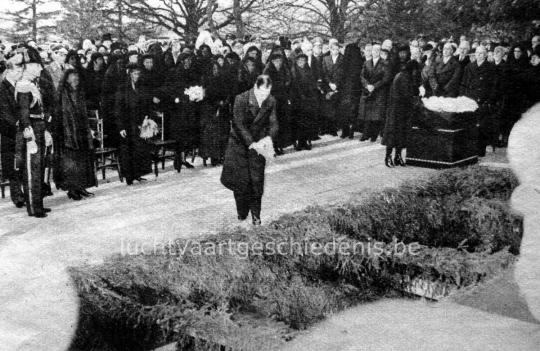

The Funeral of The Hessian Grand Ducal Family in Darmstadt, the groom to whose wedding the family was on their way, stands at the open quarry. 2 December 1937.
#prince gottfried of hohenlohe-langenburg#princess consort margarita of hohenlohe-langenburg#prince louis of hesse and by rhine#princess margaret of hesse and by rhine#princess christoph of hesse#prince christoph of hesse#margrave berthold of baden#margravine theodora of baden#princess henry of prussia#prince louis ferdinand of prussia#prince louis of battenberg
20 notes
·
View notes